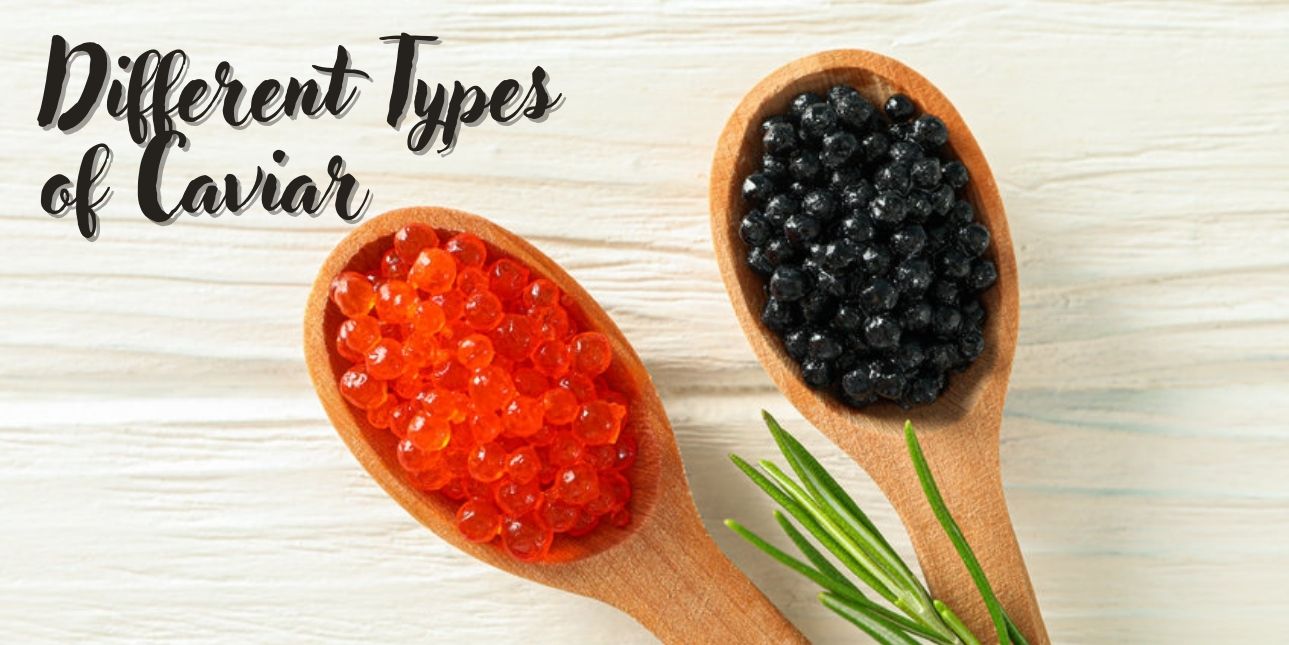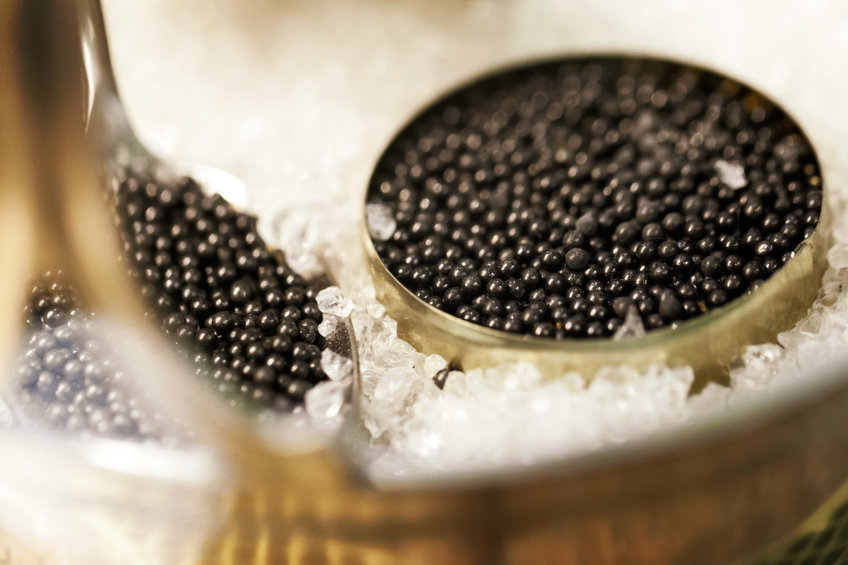
Caviar is one of the most coveted and popular delicacies in the world. Due to high demand and limited availability, caviar is one of the most expensive items in culinary establishments. Being a collection of eggs from the Sturgeon fish, caviar’s unique taste and rarity make it a dish that denotes luxury. Most high-end restaurants have their own takes on caviar and its serving methods. To offer this highly desired marine gift, you need to understand the various types of caviar and their differences.
Since caviar is quite expensive, it’s essential for restaurant owners to understand how to store it efficiently to avoid losses and setbacks. If you’re wondering how many types of caviar are there in the market, you’re in the right place! We detail the various types of caviar, their sources, taste profiles, and their appearances so you know what to procure for your high-end menu. Read on as we discuss everything you need to know about these pearly and delicious fish eggs.
Caviar & Roe
Before we get down to the nitty-gritty of caviar and its attributes, it’s important to differentiate it from its related dish - roe. While caviar constitutes fish eggs from Sturgeons, roe defines unfertilized fish eggs from other families of fishes or other aquatic animals. While caviar is often the gold standard for eateries offering luxury culinary items, roe is considered a cheaper, albeit worthy replacement for caviar. Caviar can be collected from over 27 species of sturgeon fish, while roe is usually harvested from fishes like salmon, trout, paddlefish, and bowfins. However, roe can also be collected from marine animals such as squids, scallops, shrimps, and sea urchins. Roe is often the preferred additive for several sushi dishes, whereas different types of caviar are often served alone, or with sides like unsalted crackers to accentuate the natural taste of the prized sturgeon eggs.
Types of Caviar: A Guide to Fine Dining
Here’s a list of the various types of caviar and their attributes:
1. Classification based on preparation: Caviar can be classified in a number of ways, one of them being the way caviar is processed and prepared. They’re classified as:
- Salted: Though all types of caviar are salted to some extent, these varieties of caviar are relatively saltier than the rest. Salted caviar types can be either pasteurized or pressurized.
- Malossol: These types of caviar contain some of the lowest concentrations of salt. The name comes from the Russian term for ‘less salt’. These types are often in high demand, but also come with short shelf lives due to their low salt content.
- Pasteurized: Types of caviar that are pasteurized are subjected to heat, followed by vacuum packing into glass jars. Though this improves the food safety of the caviar, the process ends up affecting the texture and taste of caviar, often lowering the market value.
- Pressed: This type of caviar is usually the product of broken and damaged caviar. These eggs are separated from the rest, treated, salted, and followed by a pressing process to create a spread or jam-like consistency.
2. Classification based on species: The best types of caviar are often classified based on the species of fish they’re sourced from. The different types of caviar based on their source species include:
- Beluga: Beluga caviar is one of the most sought-after and expensive types of caviar. Due to overfishing, the beluga sturgeon was almost pushed to extinction. Beluga caviar is now banned in the United States to conserve the species. The caviar is known for its pristine taste drawn from the unsullied waters of the Caspian sea. To make beluga caviar more sustainable, producers have combined the beluga and Siberian sturgeon to create a hybrid that’s more accessible and legal. Beluga caviar is pearl-like in shape, light-gray in color, and carries a buttery and nutty flavor alongside mildly creamy taste notes.
- Hackleback: This type of caviar is sourced from the hackleback - also known as the shovelnose sturgeon. These fishes are often caught wild from the rivers in the southern parts of the United States and are good alternatives to those sourced from countries in Europe. Hackleback caviar is more affordable and is also a high-quality alternative to imported caviar. It bears a deep black color with an intense taste with nutty influences. Hackleback caviar also bears a characteristic shimmer that can help keen connoisseurs identify it.
- Sevruga: Sevruga caviar happens to be one of the most popular types in the world. It bears the most intense taste among all caviar types and draws influences from the habitat of the fish. This species is often found in the Aegean, Caspian, and Black seas. The taste is briny and nutty, and the color of sevruga caviar can range from pearl gray to deep black. This type of caviar is also one of the smallest in size, but what it lacks in size is compensated by the intensity of taste and rich texture.
- Ossetra: Ossetra is the most readily available among all the different types of caviar in the market. It is also the most affordable when compared to other high-end caviar types. Ossetra caviar is a common feature on several restaurant menus and makes fine dining more affordable to many. Despite their availability, overfishing of the Ossetra sturgeon has recently led to shortages, making the prices steeper in recent years. This type is known for its notes of citrusy goodness coupled with a buttery and briny taste profile. Depending on the variety, Ossetra types can be gold, gray, or black.
- Kaluga: A close competitor to Beluga caviar, the Kaluga variant is a sustainable alternative to its overfished cousin. With a taste that mimics the prized Beluga's offering, Kaluga caviar has grown to become one of the most popular caviar types in the West. Ever since the ban on the imports of Beluga caviar, Kaluga types have taken over the market with their earthy and buttery taste. They’re light to dark brown and far cheaper than the most coveted types of caviar on the market and are sourced from the river mouths and seas in Asia.
- Sterlet: Another European caviar type, the Sterlet is a prized offering from the seas of eastern Europe and the rivers of Siberia. Though smaller in size when compared to the other inclusions on this list of the best types of caviar, Sterlet varieties are mild and buttery in taste. They’re light to dark gray and bear a characteristic silvery shimmer. Just like other European sturgeons, the Sterlet sturgeon too is now endangered due to overfishing, driving its prices higher in the market.
3. Classification based on farming: Due to the increasingly unsustainable nature of caviar fishing, several fish farms have cropped up across the world to support the demand. Classification of farmed caviar too depends on the type of species of the fish in specialized aquaculture setups.
Caviar Storage
Caviar is a very delicate culinary item and might perish quickly if not stored properly. Opened tins of caviar must be put away in the coldest sections of the fridge and can be stored for only up to three days before they lose texture and taste. On the other hand, sealed tins and bottles of caviar can be put away in the fridge for up to six weeks. Ensure you have high-quality refrigerators & freezers or walk-in units in case you procure caviar in bulk and serve them to your customers regularly.
Caviar remains one of the most sought-after natural delicacies on several restaurant menus. Offering them to your customers helps your brand appear as a luxury entity committed to maintaining the highest standards. Support your fine-dining services with quality backhouse equipment and kitchen appliances to ensure you remain a trusted eatery for your loyal customers.

















